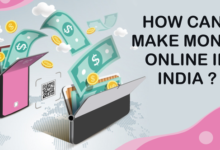For the past couple of years, many industries, such as the marketing sector, have been going through big changes. From the disruptive tech of AI to the ever-changing consumer behaviors, the shadow of massive growth looms.
According to SignalHire’s research, marketing and advertising is the 10th fastest-growing industry. However, many businesses are struggling to adapt quickly to this growth and are getting left behind. If you’re one of these people, don’t worry.
We’ve crafted a list of the most innovative strategies to help you. But first, let’s talk about where things currently stand
The Current State of Marketing
Marketers are in high demand as businesses increasingly recognize the importance of a strategic approach. With the digital transformation accelerating, the role of marketers has expanded to include data analysis, AI integration, and omnichannel strategies.
Predictions for the marketing industry are promising. According to recent reports, the demand for skilled marketers is expected to grow significantly over the next decade. This growth is driven by the need for businesses to stand out in an ever-crowded digital marketplace and the continuous evolution of marketing technologies.
Emerging trends such as personalized marketing, AI-driven insights, and sustainable marketing practices are shaping the future. Companies are investing in these areas to stay ahead of the competition and to meet the evolving expectations of consumers.
As a marketing specialist, staying updated on these trends and continuously honing your skills will be crucial. The industry is dynamic, and those who adapt and innovate will thrive.
With a solid understanding of marketing’s core principles and an eye on future trends, you can now explore new strategies to generate more leads and drive your business forward.
Secrets That Marketers Don’t Want You To Know
In this section, we will not tell you to create intrusive pop-ups or use exaggerated buzzwords for your content. Nope, none of that stuff. In fact, the techniques listed here use technology such as AI and automation to make them more efficient and effective.
Make the Most out of Your AI Tools
The excitement surrounding AI lures website owners into thoughtlessly creating content with the expectation of gaining inexpensive search engine traffic. Google understands these hopes and is honing its algorithms to assess content quality.
Among other things, Google has developed the E-E-A-T principle (Experience, Expertise, Authoritativeness, and Trustworthiness) to do just that. Its new policies encourage the most accurate and high-quality content possible, ensuring that AI-generated content meets these standards. For more details, you can refer to their guidelines on generated content.
Long before ChatGPT emerged in 2022, many marketers were using AI to create content. Google’s policy never banned sites from using AI-generated content; it simply aims to ensure the quality and accuracy of the content. It is crucial to use AI tools ethically and legally, leveraging them effectively without compromising on quality.
You shouldn’t just tell your AI assistant to “Write a month’s worth of blogs,” but unfortunately, some people try. They rely on these tools to create content without adding any human touch.
So, how do you take advantage of AI ethically and without any negative implications?
One way is to use it for research and inspiration. You can generate topic ideas, gather data and statistics, or even brainstorm headlines. It saves you time and gives you a starting point for your process. Then, add your own twist by writing the content yourself or editing the generated text.
Always remember E-E-A-T. Make sure the output still showcases your expertise on the topic and maintains a high level of credibility.
A great example is adding testimonials from real customers. You can also include links to reputable sources. Doing this will not only improve your authority but also diversify the voices and perspectives in your content. Here are some tips:
- Be specific with your prompts
- Avoid AI-sounding terms
- If writing a blog, backlink to trusted sources
- Don’t stick to one tool; try different platforms that will fit your needs
AI is a tool, not a human replacement. To get the most out of it, use it as a starting point and add your expertise.
Quality Content Is (Still) King
Putting yourself out there without providing value is a big no-no. Content that doesn’t connect with your audience will never sell.
No matter how great your product or service is.
Forced attempts will hurt your sales more. People don’t rely on surface-level knowledge anymore. When they are interested in something, they will research and learn about it before making a purchase.
They go to platforms such as Reddit, Quora, and YouTube. There are endless places where people share their views or ask questions. If they feel your product doesn’t seem right, they’ll look for reviews.
We’ll revert to what we mentioned earlier about Google’s E-E-A-T principle. If you have a new product, promote it in a way that will show you are the right provider. You need to be authentic. People need to know that you are an expert (and not just by saying so).
How? Follow these easy tips to help you produce quality content that will attract your target audience:
- Know your target market and create a buyer persona: Find out who your audience is and what they need. Creating a detailed buyer persona helps tailor your content to their specific preferences and pain points.
- Conduct keyword research and use SEO strategies: Identify the keywords your target audience is searching for and incorporate them naturally into your content. Use SEO best practices to improve your visibility in search engines.
- Use storytelling techniques to make your content more engaging: People connect with stories. Use narrative techniques to make your content more relatable and memorable.
- Use data-driven insights, such as customer feedback and analytics: Leverage data to understand what content resonates with your audience. Customer feedback and analytics can provide valuable insights for refining your content strategy.
- Add product or service certifications (if applicable) to the site: Highlight any relevant certifications to build trust and credibility with your audience.
- Do not depersonalize your experts: Showcase the expertise of your content authors. Provide detailed bios that highlight their specialized education, impressive experience, awards, and certifications. Include links to their LinkedIn profiles or other professional platforms to validate their credentials.
- Include visuals and multimedia: Enhance your content with images, videos, infographics, and other multimedia elements to make it more engaging and easier to digest.
Get Yourself an Influencer
No, we are not talking about those big names. You don’t need Logan Paul or Kim Kardashian to have effective influencer marketing campaigns. Look for micro-influencers—they have smaller but more targeted audiences.
These individuals have established reliability and trust with their followers, translating to more impactful promotions and endorsements. Plus, working with micro-influencers is cost-effective, as they often charge less.
The idea here is you don’t need a massive following to have an impact. Just connect with the right influencers who align with your brand values. They can effectively showcase your products or services to their engaged followers.
If you have difficulties with reaching out to the influencers, leveraging tools like SignalHire can significantly enhance your strategy. It provides access to valid personal and work emails, phone numbers, and contact details of professionals and companies.
Having these nano-ambassadors won’t feel like you’re just selling. Instead, it creates an authentic and relatable brand image.
Look Into Brand Partnership
Let’s go back to the notion of providing credibility to attract leads. The best way? Partner with brands that share your values and have a similar target audience to gain exposure.
The cherry on top?
You can tap into their deep-rooted customer base. Collaborate on marketing campaigns, co-create content, or offer a joint promotion to attract both your crowds. But the main goal here is that these established brands can vouch for you. It helps build confidence with your potential buyers.
Email Marketing Is Not Dead
Despite the rise of social media and other digital marketing channels, email marketing remains an effective strategy. With over four billion users and an ROI of 36:1, it’s a can’t-miss for many businesses. We’ve already talked about using AI to create content, including email campaigns. But here’s where the magic really happens.
Email marketing isn’t all about content. It’s also about reaching the right audience with precision.
Say you have 10,000 contacts on your list. You don’t send them the same thing. There are funnel stages and different preferences you need to know. With the help of automation, you can create different “tailored“ funnels and segments in minutes.
Work with tools such as ChatGPT to craft personalized nurture and sales email campaigns. Use the data that you’ve collected to write targeted messages that speak directly to your subscribers’ pain points. Increasing the chances of them engaging with your emails and taking action.
Social Media Hacking
It’s not what you think. We’re not talking about hacking into social media accounts.
In this context, we mean prioritizing platforms that bring you the most significant value and engagement. For example, if your target audience is mostly on Instagram, focus your efforts there instead of spreading yourself thin across multiple platforms.
If you’re aiming to maximize the use of social media platforms, here’s how it works:
- Enhanced Targeting: Ensures messages reach the right professionals on platforms like LinkedIn, where personalization and relevance are key.
- Efficient Prospecting: Simplifies the process of gathering contact information and enables quicker engagement with potential leads or influencers.
- Access to Company Insights: Knowing who works at a company and how to contact them can facilitate strategic partnerships or targeted B2B marketing campaigns.
The Shorter the Video, the Better
Don’t take this the wrong way, but people in our era have shorter attention spans than ever before. With the rise of social media and instant gratification, consumers are less likely to watch long videos that sell a product or service. So, keep your videos short and sweet.
In fact, 75% of people watch short-form video content on their smartphone or tablet. From TikTok videos, Instagram reels, or YouTube shorts, we’ve seen its success in recent years. Creating a compelling and informative video in under a minute is difficult.
But it’s not impossible.
You can start by identifying your key message and focusing on delivering it in a concise manner. Use visually engaging elements like animations or graphics to capture the viewer’s attention. Lastly, don’t forget to include a clear call-to-action at the end of the video to drive conversions.
Keep Up
If you feel like you’re struggling to keep up, now is the time to act. Embrace innovative marketing strategies, leverage technology wisely, and continually adapt to changing trends.
Don’t let your business get left behind—stay proactive, stay informed, and stay competitive. The future of marketing is dynamic and full of potential for those who are ready to seize it.
In this section, we will not tell you to create intrusive pop-ups or use exaggerated buzzwords
for your content. Nope, none of that stuff. In fact, the techniques listed here use technology
such as AI and automation to make them more efficient and effective.



